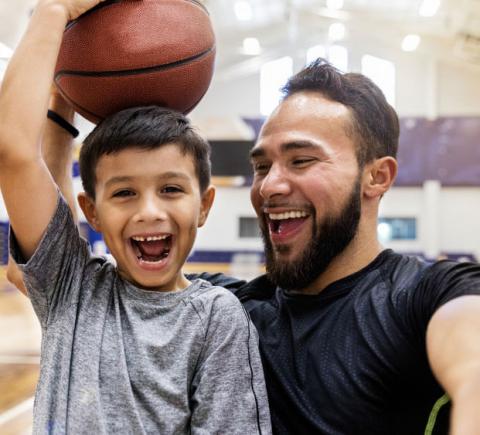
Grounding Our Work
Grounding Our Equity Work: U.S. Racial Disparities
The case for intentionally focusing on equity becomes clear when we examine the persistent disparities present in every aspect of social and economic well-being in the United States. Although disparities and inequities exist based on multiple dimensions, including race/ethnicity, gender, ability status, and income – the data show that the most enduring, pervasive, and intractable disparities are those based on historical patterns of structural and institutional oppression and discrimination based on race. Many current disparities in economic mobility, education, and health owe their origins to intentional policies and practices, undergirded by a belief system of inequality.
A Few Key Data Points To Help Illustrate The Case:
Economic Mobility
The ability of Americans to improve themselves and their families’ economic condition, in other words, to access the American dream, is highly correlated with racism and patterns of discrimination, that constrain opportunities and limit choices for some and create privilege for others.
Net Worth
The net worth of the average white household in the United States is 13 times that of the average African American family. Given that a home is typically a family’s greatest single asset and accounts for a significant portion of overall wealth, the legacy of discrimination in housing and lending in the U.S. are major contributors to this disparity.
Poverty
21 percent of African Americans and 18 percent of Hispanic Americans live below the poverty line, in contrast to 10 percent of white and Asian Americans.
Household Income
Median household income is $87,194 for Asian Americans and for $70,642 for whites in contrast to $41,361 for African American and $51,450 for Hispanic households.
Educational Achievement And Attainment
At every key milestone, from cradle to career, significant gaps persist and remain strongly correlated with race. On average, white and Asian Americans have greater access to educational resources (e.g. early childhood programs, quality K-12 schools, enrichment opportunities) and experience stronger outcomes (reading proficiency, high school, and college graduation) than their American Indian, African American, and Hispanic counterparts:
Reading Proficiency
18 percent of African American, 19 percent of American Indian, and 23 of Hispanic 4th grade students are proficient or above in reading, in contrast to 45 percent of white and 57 percent of Asian American 4th grade students.
Youth Disconnection
18 percent of African American, 13 percent of Hispanic, and 30 percent of American Indian youth, ages 16-24 are neither in school or working, in contrast to 7 percent Asian Americans and 9 percent of white youth. Although numbers have improved over time for Hispanic youth, disconnection rates have worsened for African American youth.
Post-Secondary Education
68 percent of Asian Americans and 54 percent of whites have some form of post-secondary degree; in contrast only 33 percent of African Americans, 27 percent of Hispanics and 27 percent of American Indians have attained the same level of education.
Healthcare Access And Outcomes
Gaps in access to quality healthcare and disparities in health outcomes also correlate with historical and current unequal treatment based on race. African Americans and Hispanics are more likely to experience chronic health conditions, to live in communities that are unhealthy, and to lack adequate health insurance. These gaps have their origins, in part, to patterns of access to health services that are correlated with place of residence, a lack of affordability, and patterns of differential treatment of patients based on race, resulting in a legacy of distrust of the medical profession.
Healthcare Insurance
11 percent of African Americans and 16 percent of Hispanics are uninsured, in contrast to 6 percent of whites and 7 percent of Asian Americans.
Obesity
Although obesity is a widespread issue in the U.S., with 4 in 10 American adults considered obese, significant disparities exist: 47 percent of African Americans and Hispanics are considered obese; in contrast to 38 percent of whites and 13 percent of Asian Americans.
Maternal Mortality
African American mothers are 3.3 times, and American Indian mothers 2.5 times more likely than white mothers to die from pregnancy-related complications. Children born to African American and American Indian mothers are also significantly more likely to die before their 1st birthday than those born to white, Hispanic or Asian American mothers.
Place matters as well. The legacy of discrimination in housing and mortgage lending practices has created communities where the extent to which individuals can access a good education, quality healthcare services, and proximity to well-paying jobs is often highly correlated with race. These realities reinforce and amplify each other. Individuals who are more educated are more likely to live healthier lives and earn a sustainable income. The inverse is also true in that individuals who lack access to quality education, are less likely to earn a living wage and to afford and/or have access to high-quality healthcare.
Understanding the systemic causes that contribute to current disparities also illustrates why United Way’s holistic approach, to fight for the education, health, and economic mobility of everyone is made more powerful by applying an equity lens. When we have a better understanding of the underlying causes of disparities, we can implement strategies explicitly designed to address them.



